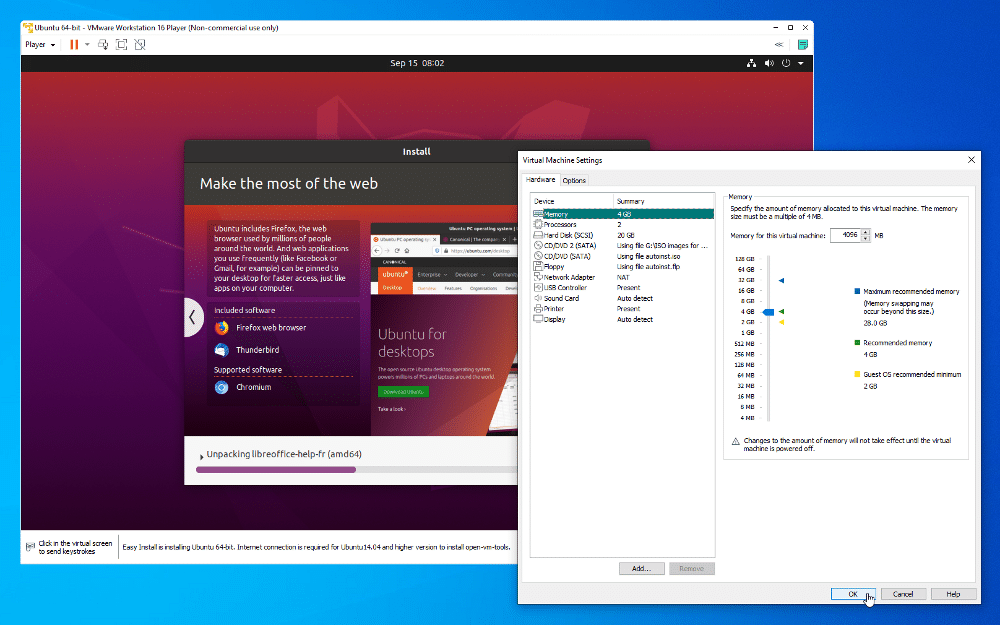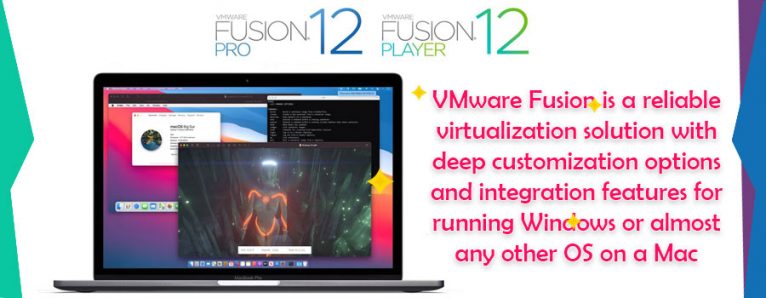

- #VMWARE FUSION 12 HOW TO#
- #VMWARE FUSION 12 INSTALL#
- #VMWARE FUSION 12 DRIVERS#
- #VMWARE FUSION 12 PC#
- #VMWARE FUSION 12 LICENSE#
You can use it to test software on a clean installation without having to purchase extra hardware, but before you install software on the machine, you might want to create a snapshot so you can roll back any changes. VMware Fusion * to create a macOS Big Sur Virtual Machine. A window will appear, click Install to connect the VMware Tools installer CD to the virtual machine.ĭouble click the Install VMware Tools installer.Ĭlick Continue and follow the remaining steps of the install wizard.
#VMWARE FUSION 12 DRIVERS#
The last thing we need to do is install VMware Tools because it contains drivers that make the virtual machine run faster.Ĭlick the Virtual Machine menu option then Install VMware Tools. Fusion Player has the same features as Fusion 11.5.x ‘standard’ and more.

#VMWARE FUSION 12 LICENSE#
We are now ready to install VMware Tools. Fusion 12 Player replaces Fusion 11.5 ‘standard’, and follows the same pricing and licensing model as Workstation Player, meaning that it is both free for Personal Use, but requires a license for Commercial Use. Go through the steps, answering all the prompts.Īfter another reboot, log in to macOS using the credentials you specified in the setup wizard. The macOS virtual machine will reboot into the final setup wizard. Go for a Coffee and let it run until it finishes. Wait for the files to be copied to the Macintosh HD.ĭepending on how fast your hardware is, you may notice the installation hang for a while on “Less than a minute remaining”. Select your Language then click the arrow to continue.Ĭlick Install macOS Big Sur then click Continue. Power on the virtual machine and the macOS installer should load. Step 3: Install macOS Big Sur on Virtual Machine Attach the ISO created in Step 1 by clicking the CD/DVD ROM, checking Connect, then choosing the ISO image located on the Desktop.Īfter closing the Settings window, we are no ready to power on the virtual machine and install macOS Big Sur. Give the virtual machine a name and location to save the files to then click Save. Select Apple OS X > macOS 11.0 then click Continue. When the Select installation method window appears, click Create a custom virtual machine then click Continue. To update, just select ‘Check for Updates’ in the VMware Fusion menu in the Menu Bar. System Requirements Hardware Mac models that support macOS 10.15 Catalina and newer version. For more information, see the broader VMware Fusion documentation.
#VMWARE FUSION 12 HOW TO#
Step 1: Create Bootable macOS ISOįollow the steps in How to Create a Bootable macOS Big Sur ISO to create an ISO named macos-big-sur.iso on your Desktop. The Desktop Hypervisor team at VMware is happy to announce the release of the latest update to Fusion 12, with changes to support macOS Monterey hosts, fixes for some persistent bugs, as well as improvements to the security and management of Fusion at scale. VMware Fusion® 12.1.0 is the easiest, fastest, and most reliable way to run Windows and other x86 based operating systems on a Mac without rebooting. To get around this, you can create a bootable macOS ISO and install the operating system on the virtual machine manually using the steps in this tutorial. After the files got copied, the virtual machine became stuck in a reboot loop. However, when I tried it with the professional version (12.1.2), it didn’t work. VMware Fusion has an option to create a macOS virtual machine from the recovery partition. Before we beginīefore we can create the virtual machine you will need to download VMware Fusion and install it on your Mac. This tutorial will show you how to create a macOS Big Sur virtual machine on your Mac with VMware Fusion so you can test software on a clean installation of without needing extra hardware. Perfect for development environments and practice labs.
#VMWARE FUSION 12 PC#
Run Linux, macOS, vSphere and more on a single PC or Mac. subnet 192.168.99.0 netmask Multiple Operating Systems on PC and Macĭownload VMware's Powerful desktop virtualization tool for Developers and IT Professionals. The contents of the file should be similar to below. sudo vim /Library/Preferences/VMware\ Fusion/vmnet8/nf On my installation on VMware Fusion 11.5, the conf file is in the vmnet8 folder. By default this will be a network shared with the host, with the Mac using NAT for the VMs to access the internet. You can find out what the range is by looking in the nf file of the network assigned to the VM. You cant change it to static without first knowing what the DHCP range is because it can cause a duplicate IP on the network. VMware Fusion *, the the default network will assign an IP address to the OS. This tutorial will show you how to find out what range of IP addresses you can use when assigning a static address to a VMware Fusion virtual machine.

Run Multiple Operating Systems on PC and Macĭownload VMware's Powerful desktop virtualization tool for Developers and IT Professionals.


 0 kommentar(er)
0 kommentar(er)
